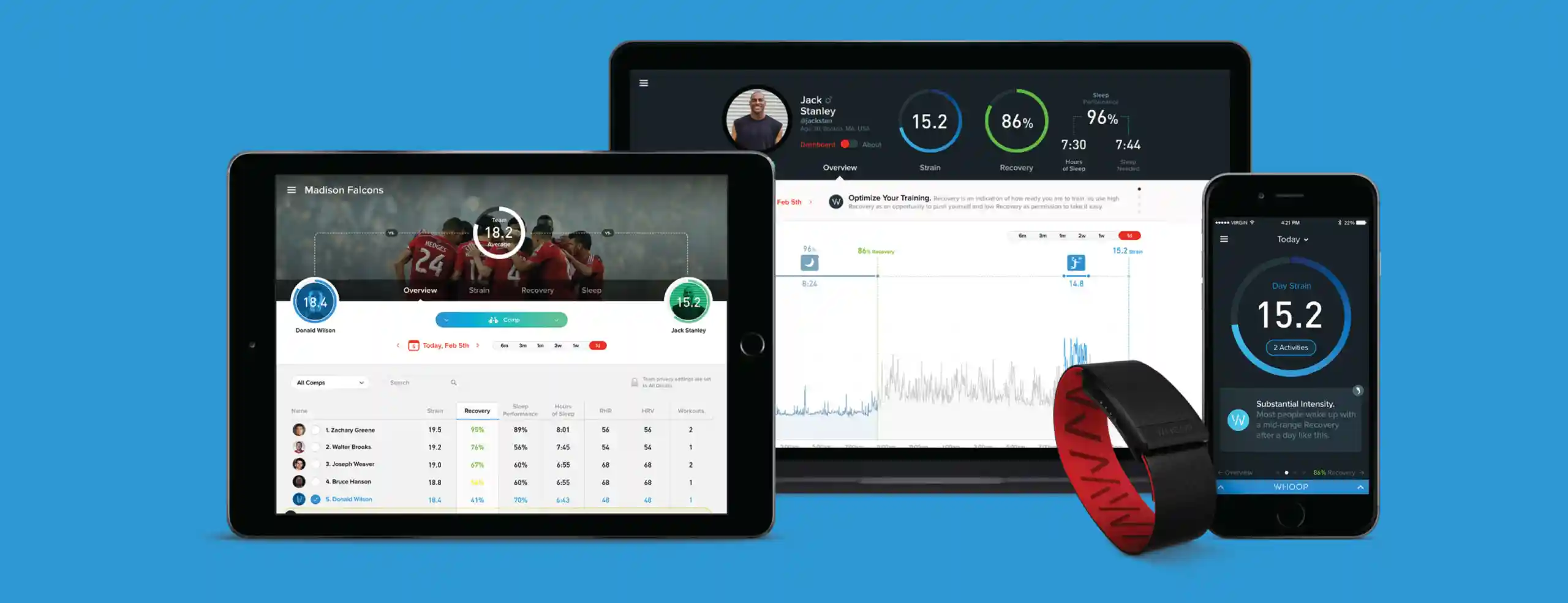Topics
- Article
Why WHOOP Uses the Best Information Designer in the World

We want things now. We want things to arrive yesterday, projects to be completed today, and people to respond back faster than humanly possible. We need information and we need it fast.
Take a look at the wearable market. Many devices out there give mediocre insights, at best. They track steps, record sampled heart rate, and merely provide you with information that most people don’t know how to leverage. WHOOP started on the foundation that athletes don’t understand their body. They don’t know why some mornings they’re tired, and why on others they’re not. WHOOP provides unparalleled data to help athletes better understand how much strain is being put in their body and how their bodies are recovering from that strain.
In order to meet the high demands of the athletic world, this athlete enablement tool needs to be responsive and elegant while also catering to the world’s best athletes. It needs to have the world’s best information designer leading direction of its design.
Enter Martin Oberhäuser
It’s actually quite an interesting story. Will Ahmed, CEO of WHOOP, knew that his product had to have an elite design before being available to professional athletes; however, he wasn’t quite sure where to turn. So, he fired up his laptop, opened Google, and typed in ‘Who is the best information designer in the world?’
“I looked through a few articles and found the name Martin Oberhäuser. He was (and is) wildly impressive. At the time, his clients included BMW, T-Mobile, Airbnb, and Facebook…he was perfect for us. So I called him once, twice, three times, and finally got him on the line.” Will said.
“Understanding WHOOP’s sophisticated performance and recovery could have been a nightmare for a non-techie like me. Fortunately, they also made their software simple and intuitive, which allowed me to quickly understand the relevant performance and recovery statistics I needed to make smarter coaching decisions.”
David Fish, Head Coach – Harvard Tennis
“Will called me out of the blue,” Martin mentioned. “He said he was flying to Germany and wanted to have drinks with me. I thought to myself, ‘it’s kind of crazy that he is traveling all the way from Boston just to meet with me with no indication of my interest, however, if he’s paying for a drink then I’m in.’” Martin laughed.
He and Will walked around Hamburg all day talking exclusively about WHOOP. Martin goes on to explain that that option to combine information design, UI/UX, and sports was an opportunity worth pursuing. “I can go play basketball on my lunch break and collect data.”
On the very next day, Martin signed the contract. He was officially a part of Team WHOOP.
As the head designer, Martin had a tabula rasa of some sort in front of him. A blank white canvas ready to accept his work. However, there was one immediate obstacle – displaying interactive real-time data for athletes is no easy task for most designers. Good thing Martin is not your everyday designer. “I almost consider myself a mathematical designer. I didn’t choose to be like that; it’s just always been something of interest to me. I’m not the kind of designer you would hire to design artwork for a CD cover, or the next movie poster. I don’t see the challenge in that, or the point quite honestly, because there is no real problem that needs solving. That type of design is all about making things look beautiful. I need a problem to solve and ‘design’ is the tool that is going to help me achieve just that.”
After a few years under his belt, Martin has taken WHOOP’s app and website to the elite level Will envisioned. He has displayed complex data of the human body in an easy and intuitive design that only gets more appealing the longer you engage with it.
The success of Martin’s design falls on his ability to be strict on himself. He continuously mentions that he can’t select a design because he thinks it looks good. The design must always be serving the data and solution at hand. He sacrifices things in order to appeal to the data.
This ‘design discipline’ has been a huge enablement tool for coaches on every level of the game. Prior to WHOOP, coaches didn’t have time to understanding how HRV relates to performance, and how heart rate relates to sleep, and how to find the correlations between performance and recovery. Martin’s designs address these common pain points.
“The WHOOP interface allows me to easily get a quick snapshot of the data for my athletes, but I also find that when I want to dive deeper, all the information is easily accessible. The design makes the system intuitive and engaging to use. I find it’s very easy to work with WHOOP’s data without feeling like the software is getting in the way.”
Christopher City, Head Coach Harvard Skiing
As the hot topic of data continues to grow in sports, coaches continue to look for tools to help them understand the strain and recovery their players are accruing. They need a slick user face that is intuitive and concise because managing your athletes off the field is the same as managing them on the field.